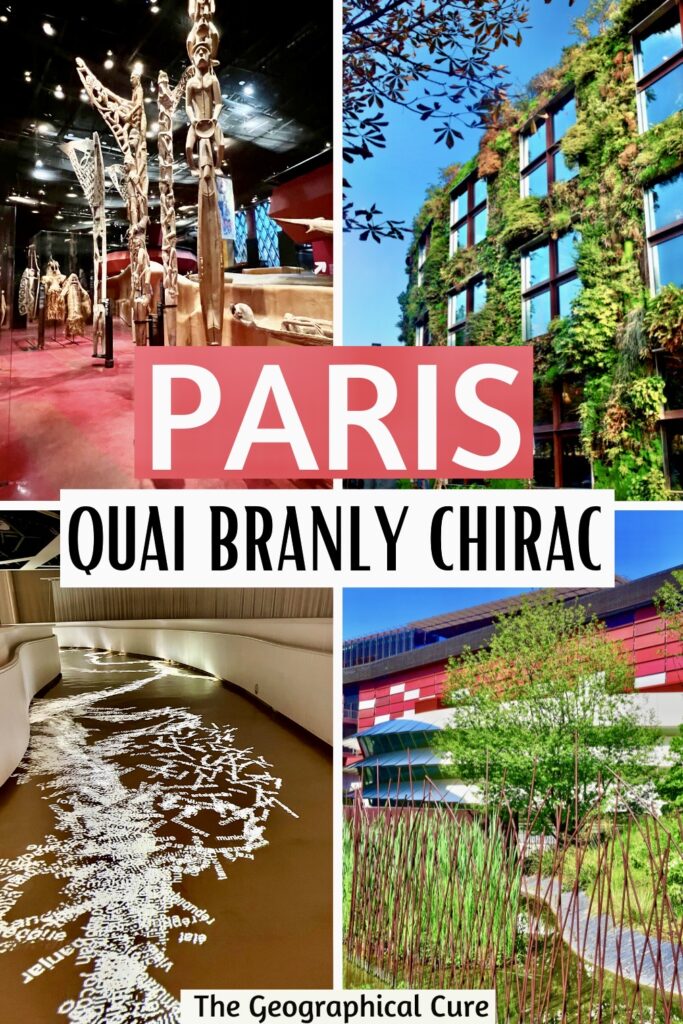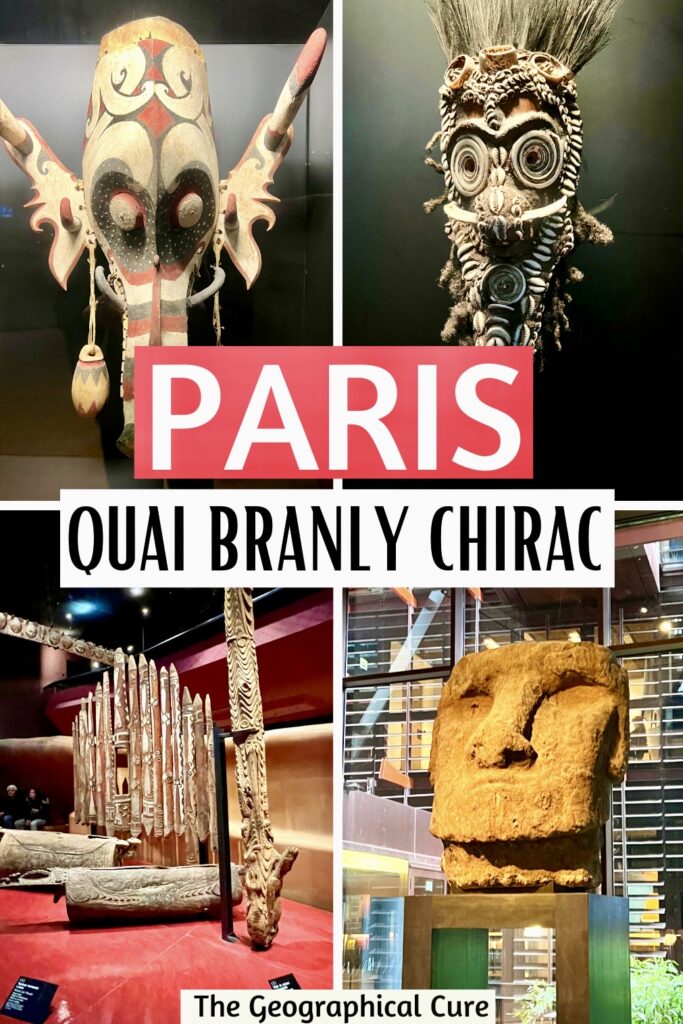The Quai Branly is a unique museum devoted entirely to non-Western indigenous art and culture.
Designed by the French architect Jean Nouvel, the museum stands on a prime piece of real estate just one block from the Eiffel Tower.
The museum’s collection comprises 300,000 delightful works from Africa, Asia, Oceania, and the Americas. The exhibits are shown in a multi-level open floor plan that criss-crosses eras and oceans.
In this Quai Branly guide, I give you an overview of the museum, tell you everything to see, and provide tips for visiting.
>>> Click here to pre-book a ticket
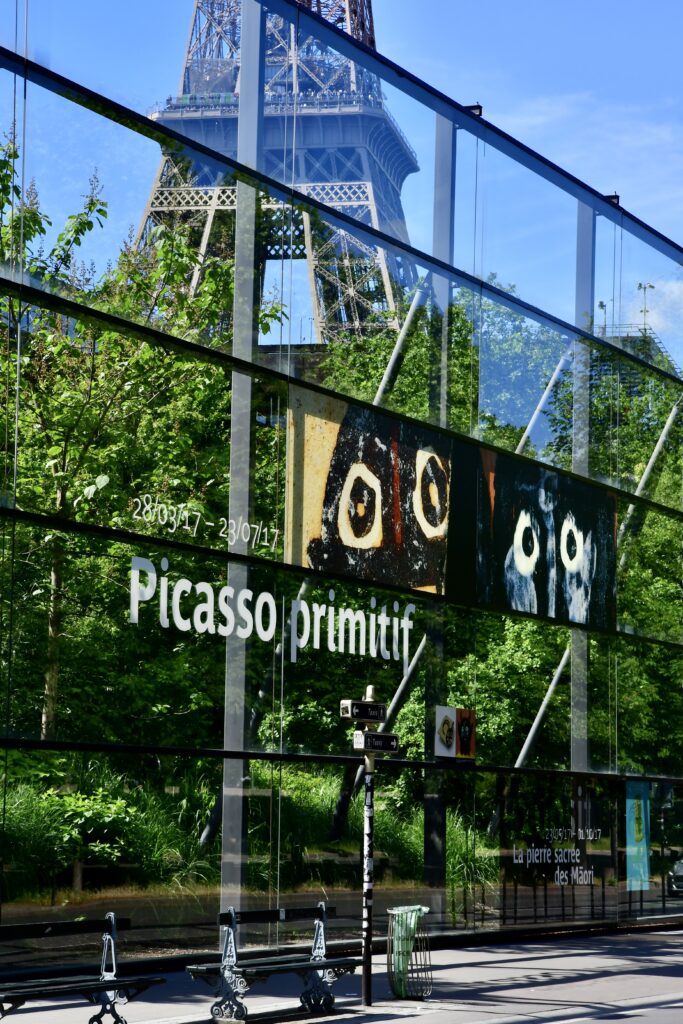
Overview Of Quai Branly-Jacques Chirac
The Quai Branly was the brain child of former French President Jacques Chirac.
It was intended to be form of post-colonial recompense, a debt “we owe to the peoples and countries” of the former French empire.
As a result, the Quai Branly is not your typical elegant Paris museum, and intentionally so.
Instead, it’s a € 238 million jumble of mismatched structures. They’re set amid a lush rambling garden designed by landscape architect Giles Clement. At dusk, the garden is illuminated with an art installation entitled L’O.
The strikingly modern museum building was custom built to house these particular art forms in their own reserve. Each facade is different.
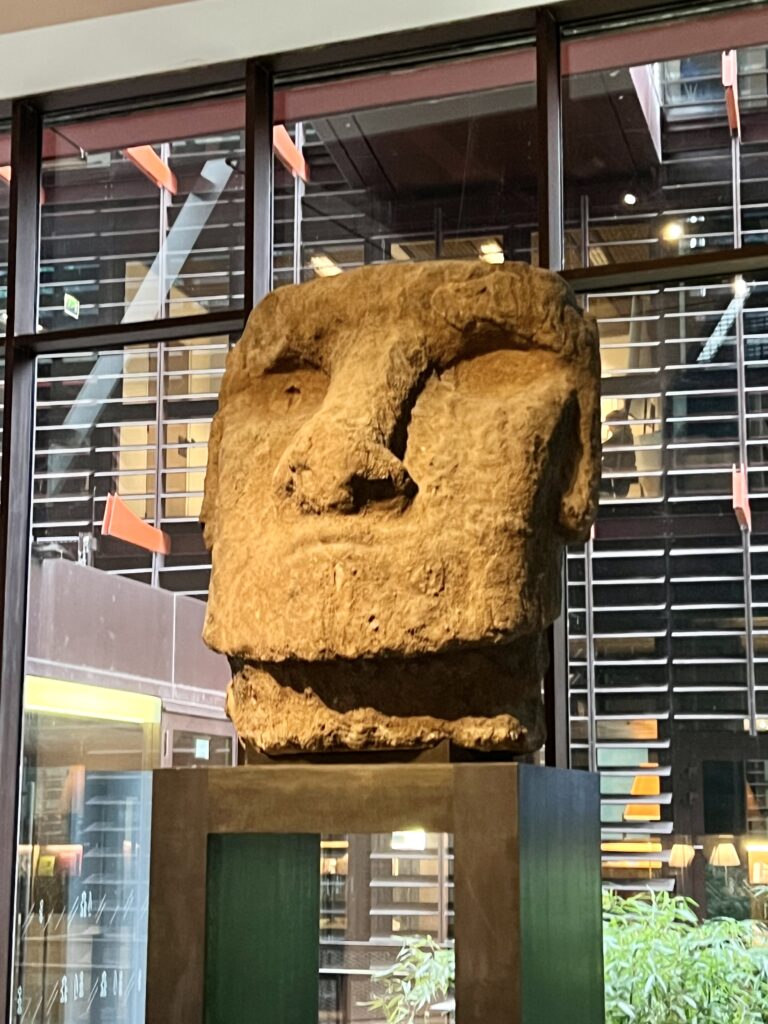
The glass and metal facade curves, bending with the Seine and reflecting the Eiffel Tower.
One side of the building sports dark red brises-soleil to reflect sunlight. One side sports a row of colorful boxes (housing museum salons) suspended by 32 foot piers and projecting out over the garden.
Another side is a living wall with exotic plants punctuated by windows created by botanist Patrick Blanc.
You enter the collection via a curving 600 foot long spiraling ramp. It has a projected video installation of multilingual words created by Charles Sandison that’s intended to simulate a river.
In parts, the ramp winds around a glass silo containing musical instruments. According to the architect, the ramp is intended as a gradual metamorphosis preparing you to arrive at the “source.”
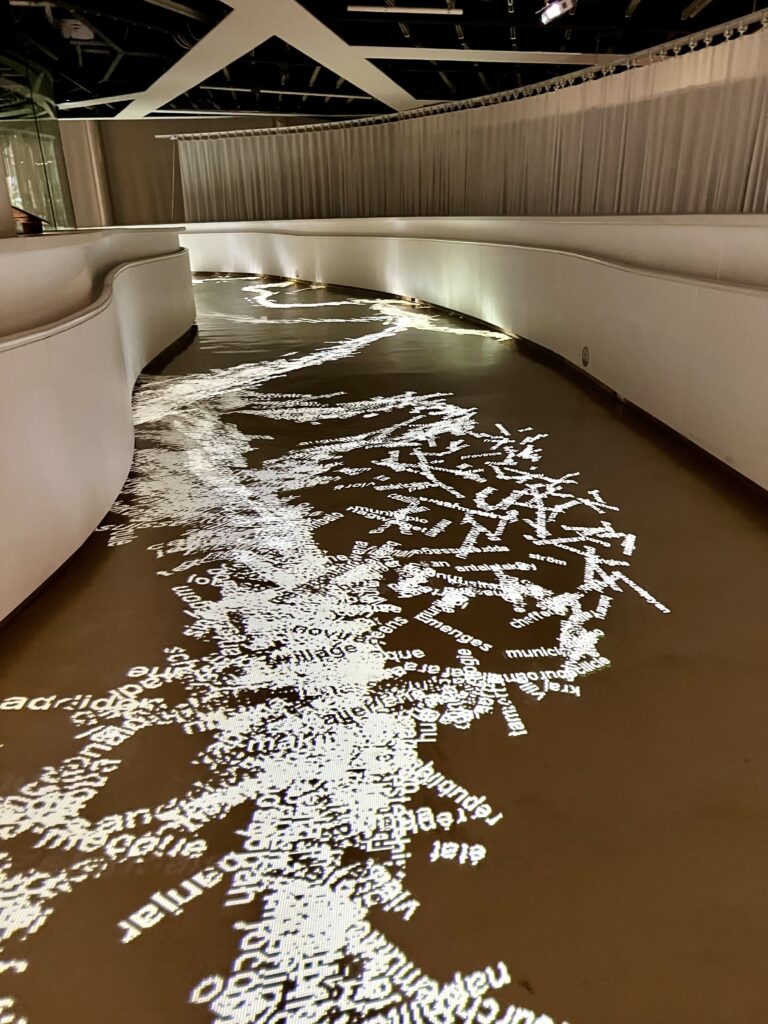
The museum is quite dark and has an industrial look. The darkness was both a deliberate choice and practical, as many of the artifacts are fragile.
It gives the rather pleasing illusion that you are wandering through caves and forests in search of the treasures of lost civilizations.
It may take a bit for your eyes to adjust to the dim lighting. I found it a tad hard to actually see a few of the exhibits.
The ceiling are black and the floors a deep red. Some walls have blue green etchings, suggesting a forest metaphor.
The museum is informal; there are no corridors or hallways. Free-standing transparent display cabinets create a kind of warren, which encourages visitors to wander rather than to follow a particular route.
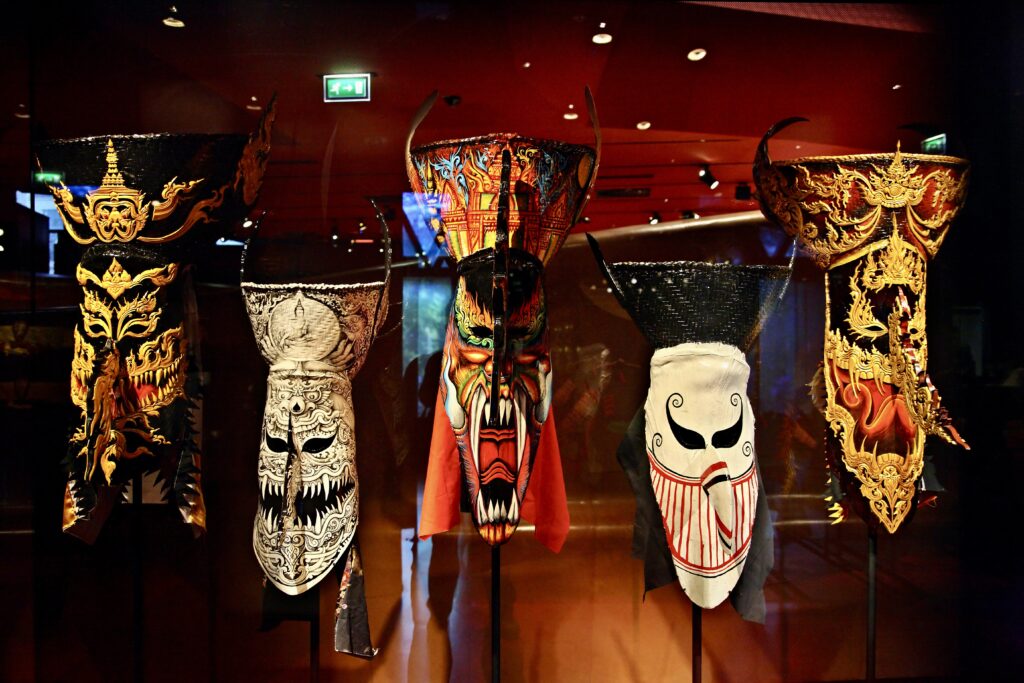
You’ll see masks, textiles, statues, voodoo dolls, vessels, ceremonial instruments, headdresses, totem poles, and other primitive art. Most of objects were created for ritualistic and religious purposes.
The exhibits came from multiple sources: the Museum of African and Oceanic Arts, the ethnographic department of the Museum of Man, the private collections of Jacques Chirac and others, and museum acquisitions.
The collections are displayed geographically. However, the regions are only demarcated by different colored vinyl floors. Be careful not to inadvertently miss a section!
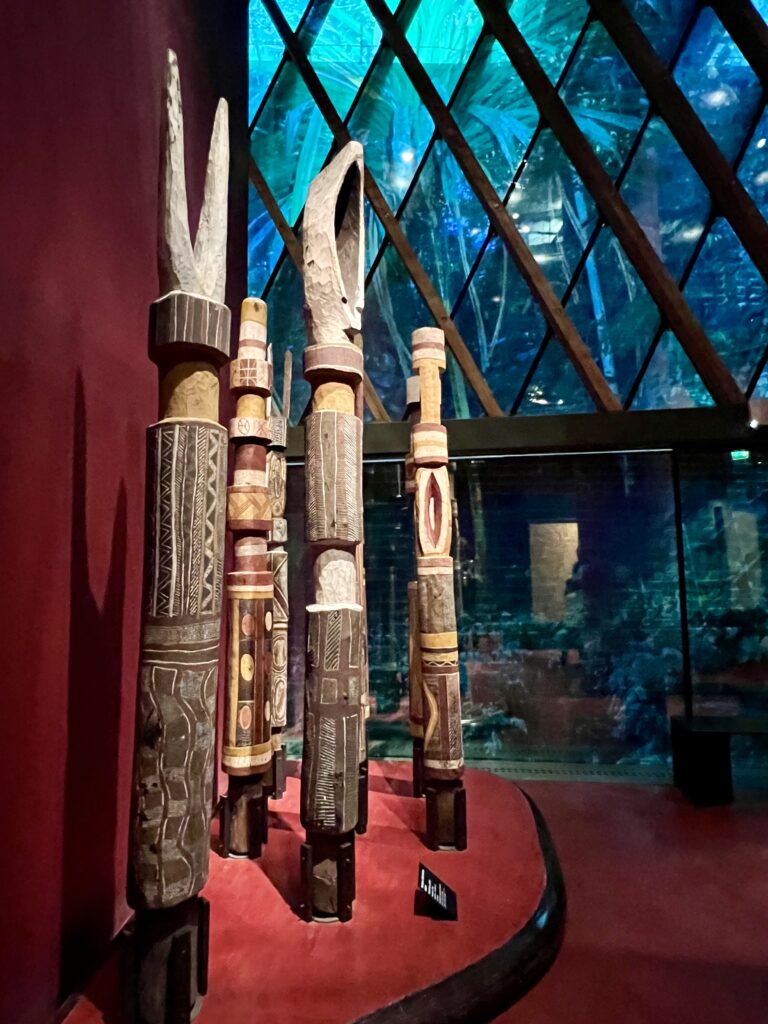
As a result of the design, the main floor feels like a bit like a vast ocean liner. You can explore aimlessly and admire whatever getting object catches your eye.
If you have a more orderly personality, you might find the setting feels disorienting, disorganized, or akin to a spooky jungle.
I usually prefer more overt organization. But not this time. The museum had a nice flow and was an entirely unique museum experience.
50% of the museum floor is given over to 4 galleries for temporary exhibitions, suggesting the museum’s commitment to in-depth coverage of world cultures. I saw an excellent exhibit on Black Indians.
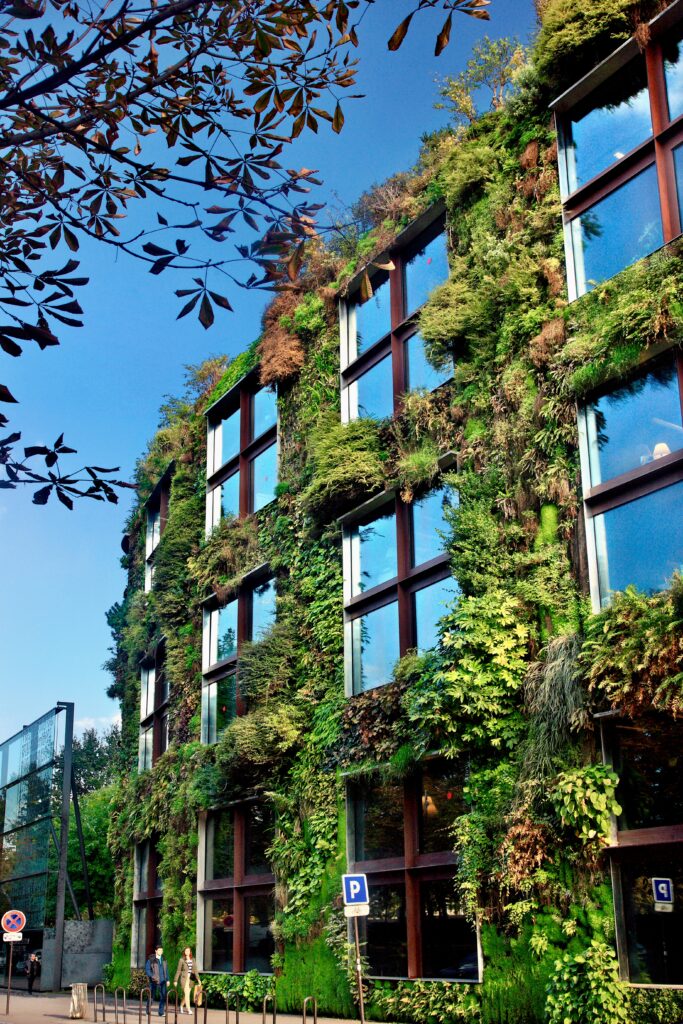
Guide To The Quai Branly: What To See
After passing through security and the ticket checker, grab a map of the museum in the entrance hall.
Stop to admire two objects: a 19th century British Columbian 45 feet high totem poll and a monumental Moai ancestor head from Easter Island. Then, head up the ramp.
As you explore the exhibits, you’ll find signage in both English and French, although much more of the latter. If you are a real fan of Primitive art, you should get the audio guide. There are also short films along the way that supplement written information.
Here are some of the museum highlights by geographic area. Be prepared to walk around in jaw-slacked amazement at the scale and scope of the fantastical presentation. It’s an evocative experience, to be sure.
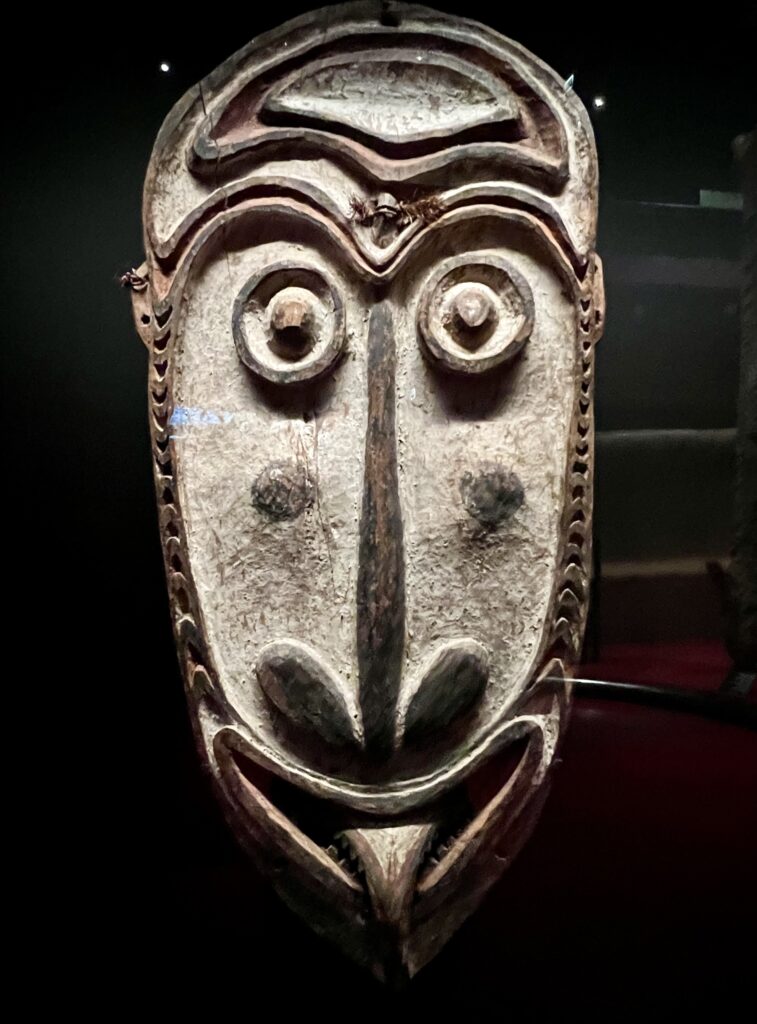
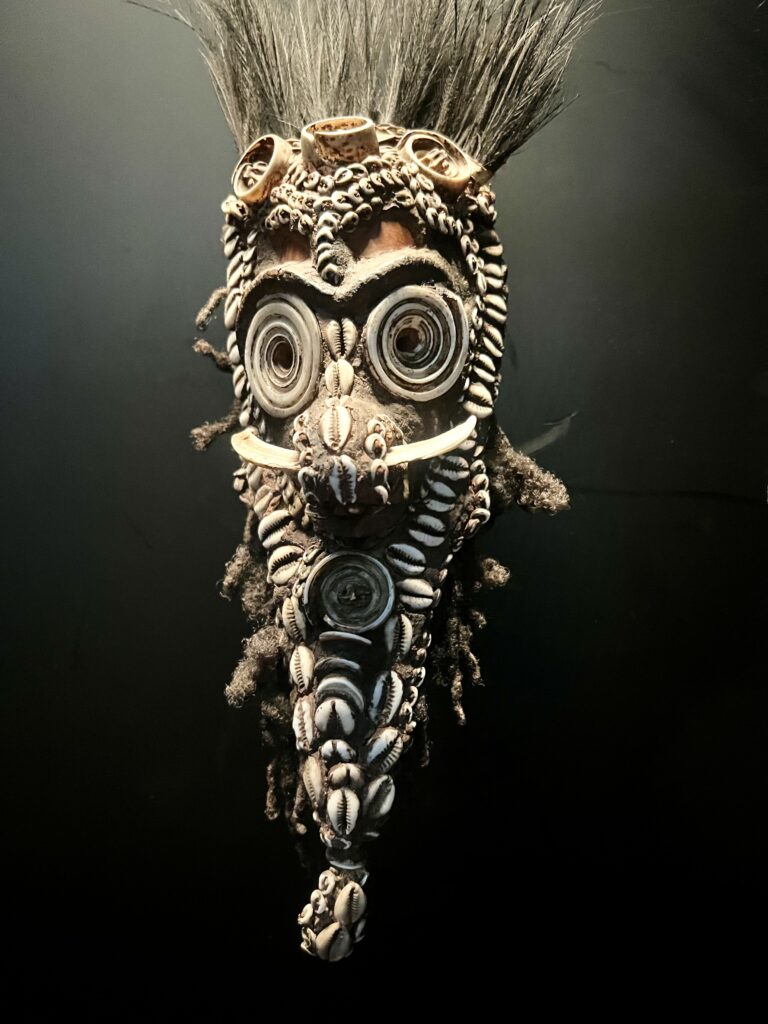
Oceania
The Oceania section is one of the most delightful in the museum. Geographically, it stretches from Malaysia to the south Pacific and includes Australia, Polynesia, Micronesia, Melanesia, insular southeast Asia, and New Zealand.
The first part focuses on the ancestors and the living. You’ll see facades of spirit houses, facade masks symbolizing ancestors, reliquaries, and magical hooks.
In particular, there is a plethora of stunning ritual masks that invested the wearer with a “power” — political, spiritual, cultural, or ceremonial. They are colorful and heavily ornamented.
Some masks were intended to create surprise or fear. To heighten the emotional impact, the features were often exaggerated with the use of long noses, disk-shaped ears, and dome shaped heads.
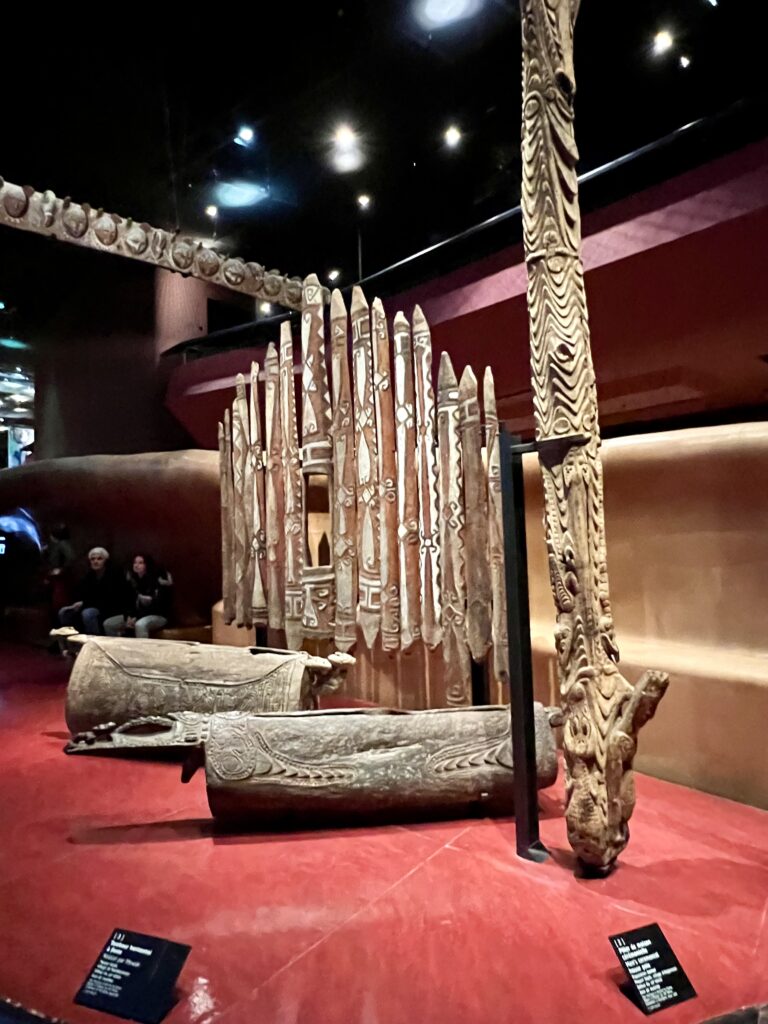
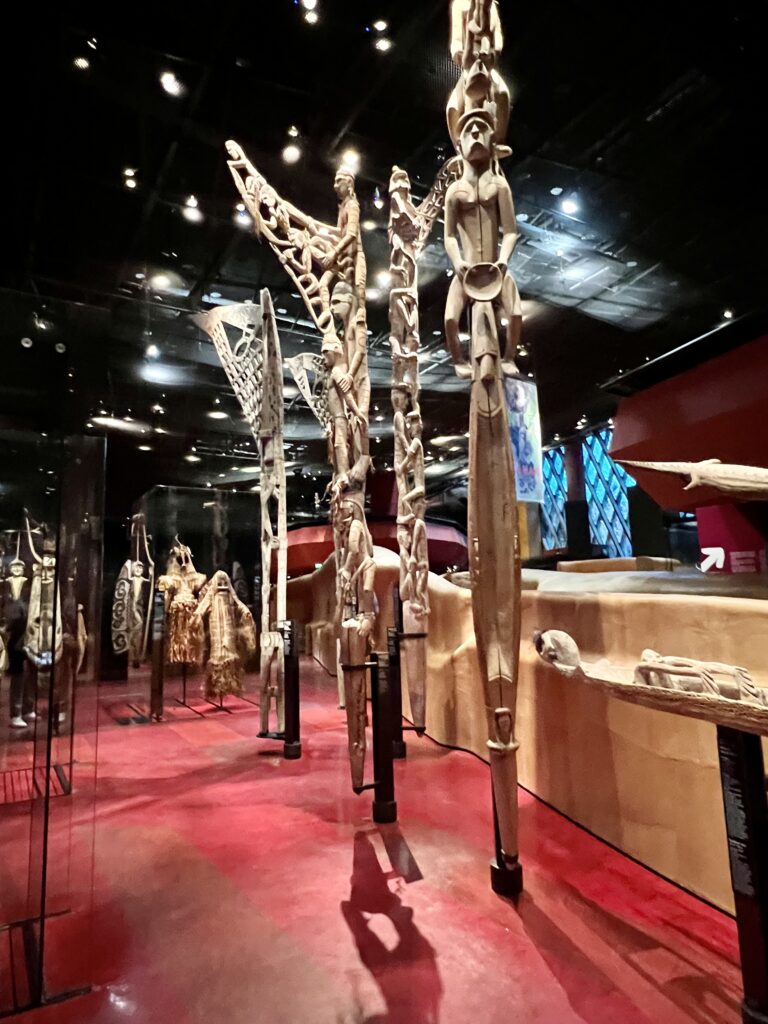
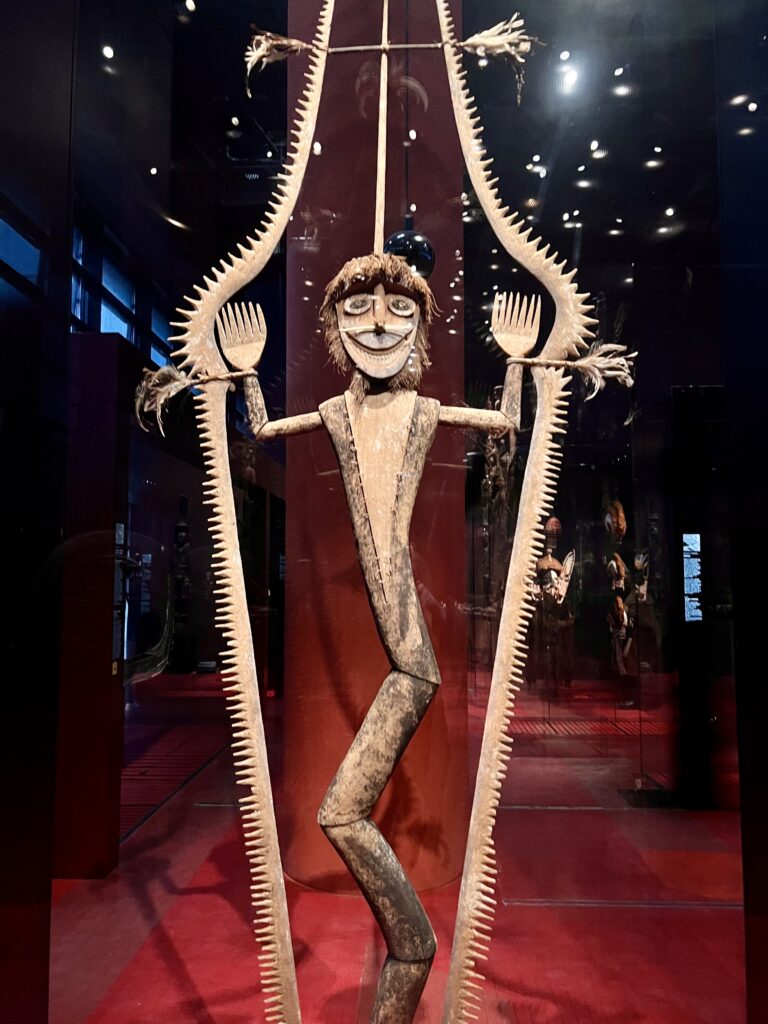
There’s also a focus on death, which was considered to be unnatural and needed to be placated through ritual. Some tribes believed that death occurred when ancestral rules were violated.
In such cases, Bis poles were erected for a ceremony in which the living promise to avenge the dead so their spirits can rest easily.
A respect for death was also reflected in the complex funeral rites of southeast Asians. You will see altars, funerary sculptures, and effigies.
During certain rites of passage, men organized large feasts. They formed a pig trading network, and some of the animals were sacrificed. Stone sculptures were created and set up for the feasts, like the one shown below.
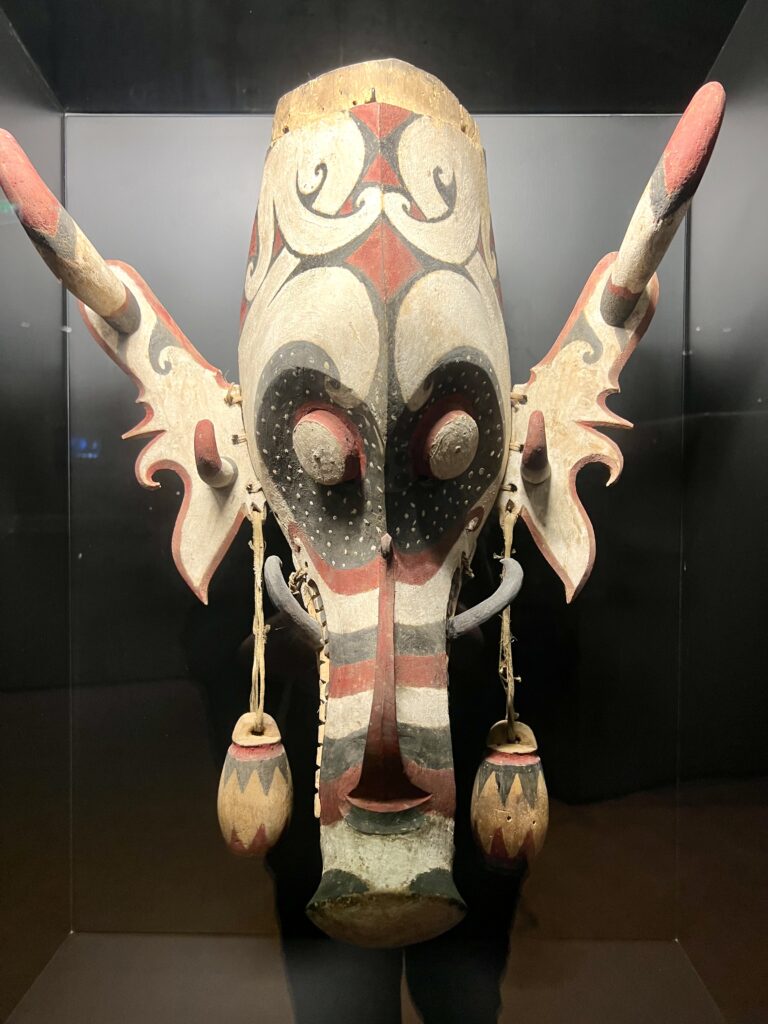
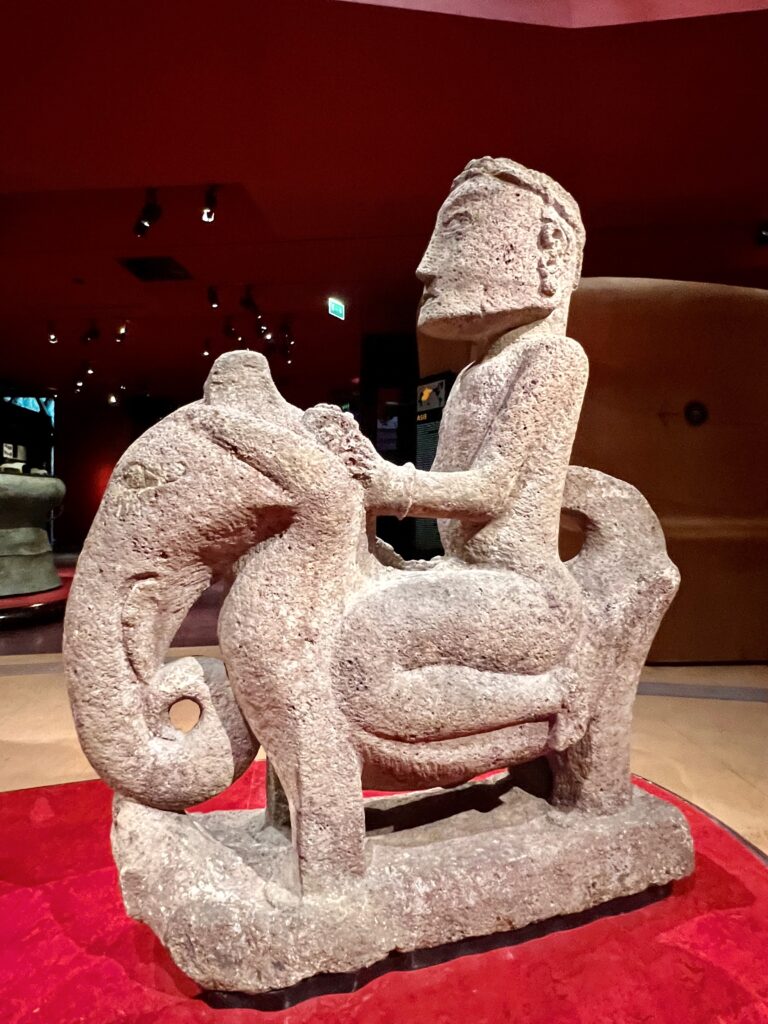
Asia
There are 50,000 pieces in the Asia collection, dating from the 19th century to the present day.
They reflect the tremendous diversity of the Asian continent, and the curators have emphasized the rich inter-cultural influences developed over centuries.
Themed spaces illustrate the religious arts, such as the Buddhism in southeast Asia and the Shamanism in Siberia.
Much of the art was made from reindeer, fish skin, and birch park. You’ll see weaponry, costumes, saris, jewelry, clothing, armor, and embroideries.
There’s a large display of Asian masks, many from classical theater or linked to rituals. You can also see an example of “Shadow Theater,” which was a popular form of entertainment set to music. In it, translucent painted figures are manipulated in front of a back-lit screen.
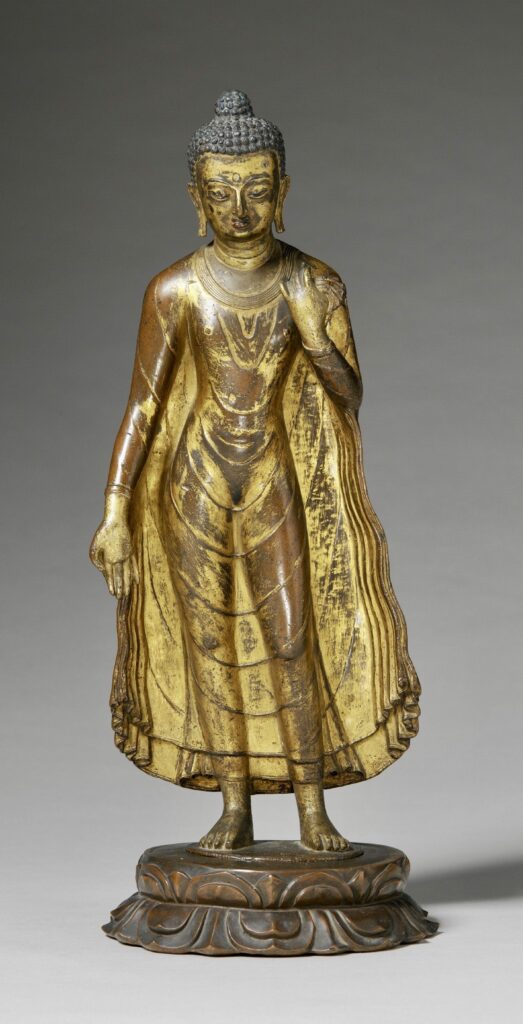
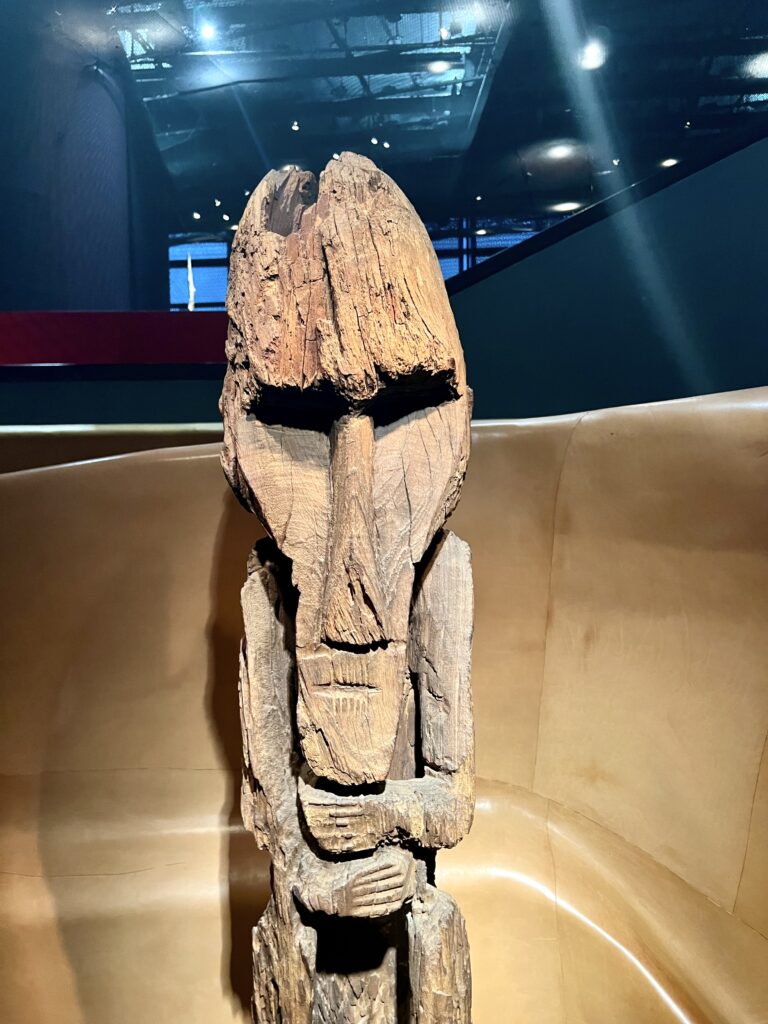
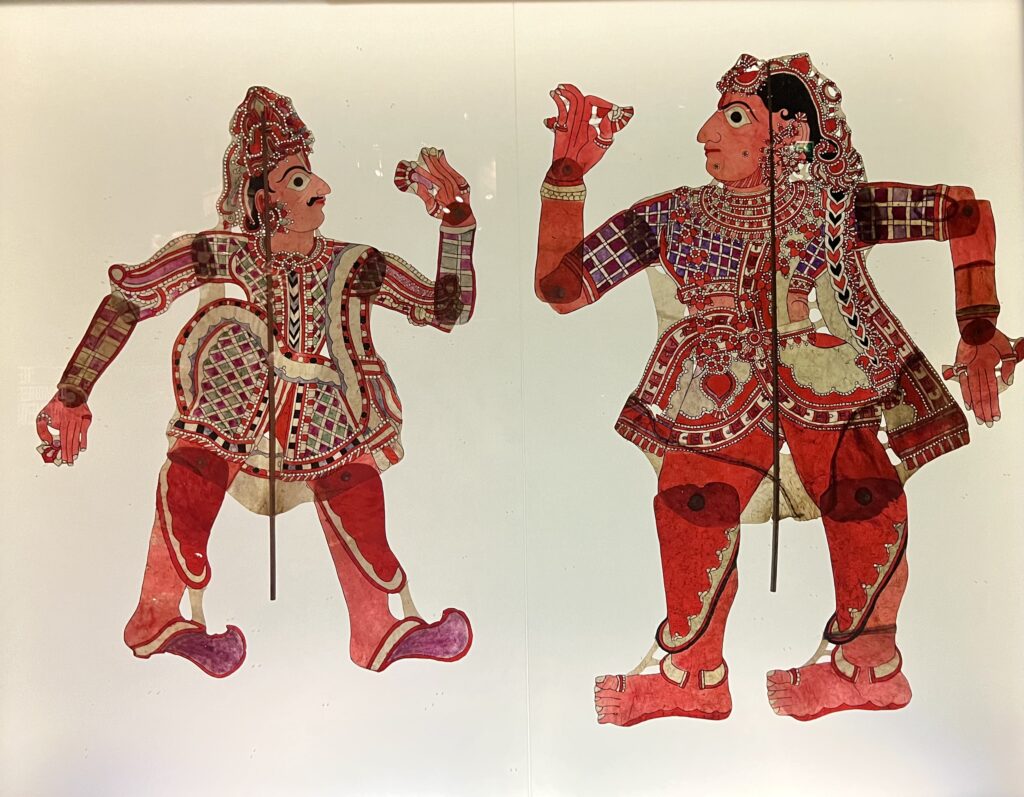
Near East & North Africa
In the next section of the museum, you’ll see some of the arts and traditions from North Africa and the Near East. This section has an emphasis on textile arts.
There are camel litters, wardrobe pieces, costumes, jewelry, face veils, pottery, and wood carvings. The piece shown just below was used during the Ashura Festival and carnival parade.
You’ll also see some tent rugs from Morocco with beautiful geometric designs.
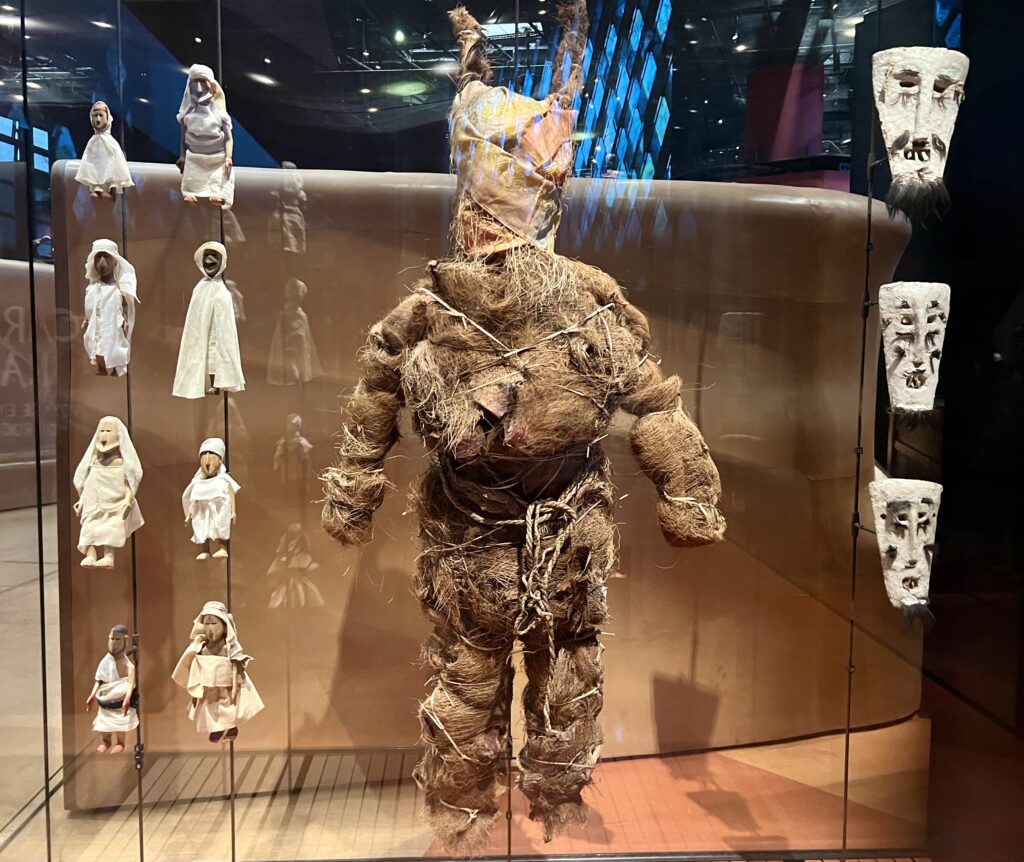
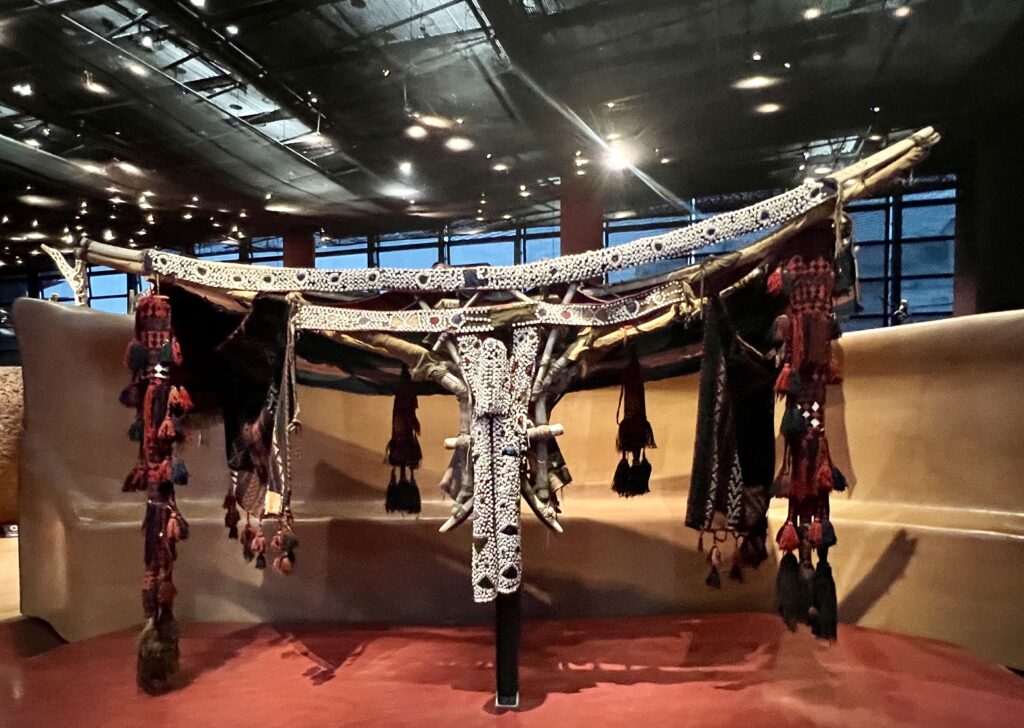
Africa
The Africa section is composed of 70,000 pieces from sub-Saharan Africa that came from the former Africa and Madagascar collections of the Musée de l’Homme and the Musée national des Arts d’Afrique et d’Océanie.
The path begins with archaeological artifacts and continues with the art of Mali, West African masks, statues from Benin and Nigeria, and magical objects from the Congo.
You’ll find examples of Megalithism, archaeological artifacts, statuary, terracotta figures, fertility staffs, spirit masks, and cult animals.
You will also see the great Djennenke statue from Mali dating from the 9th century.
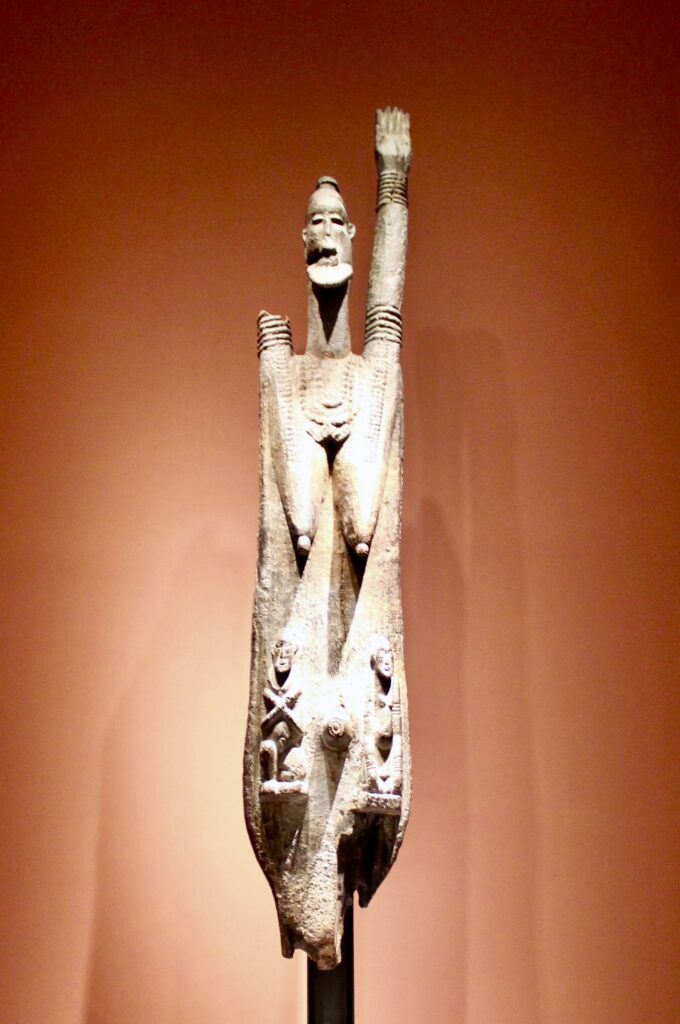
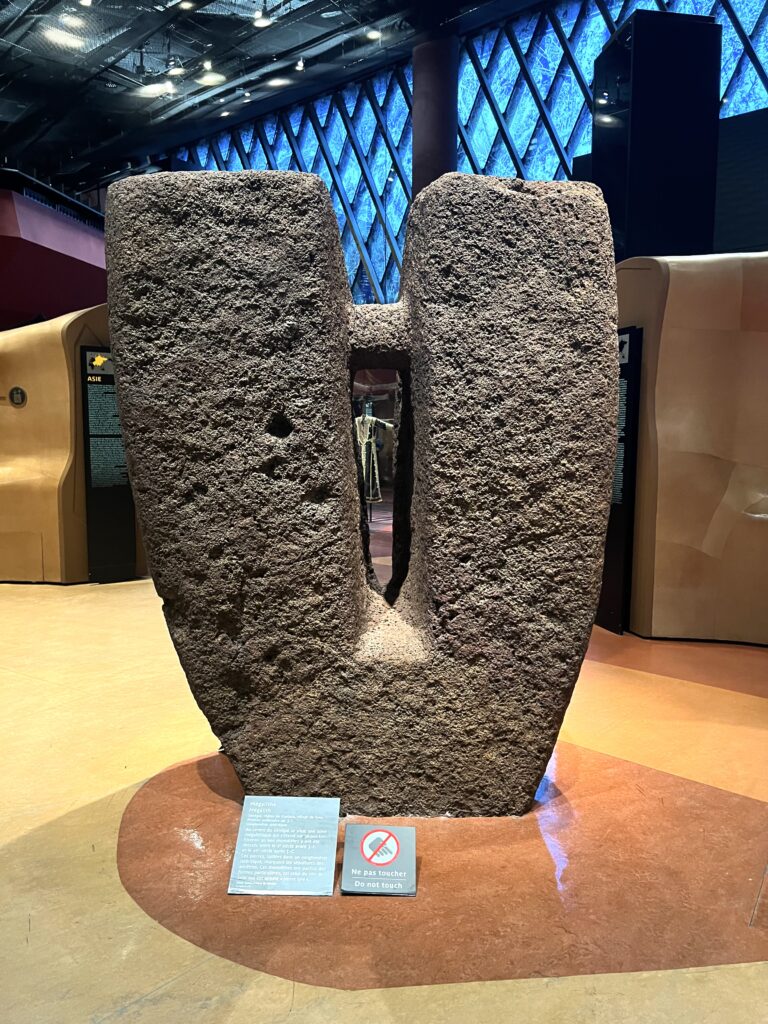
Americas
The Americas section includes exhibits from the Pre-Columbian era to the present day.
A vast part of this territory is culturally marked by the presence of the descendants of Africa slaves.
This led to the emergence of new Afro-American societies and cultures that combined European, African, and Native American influences.
Voodoo, art, and ritual played a fundamental role in their lives. You will see buffalo hides, masks, headdresses, ritual dolls, effigies, colorful feather works, Aztec sculpture, and gold and silver work from Columbia.
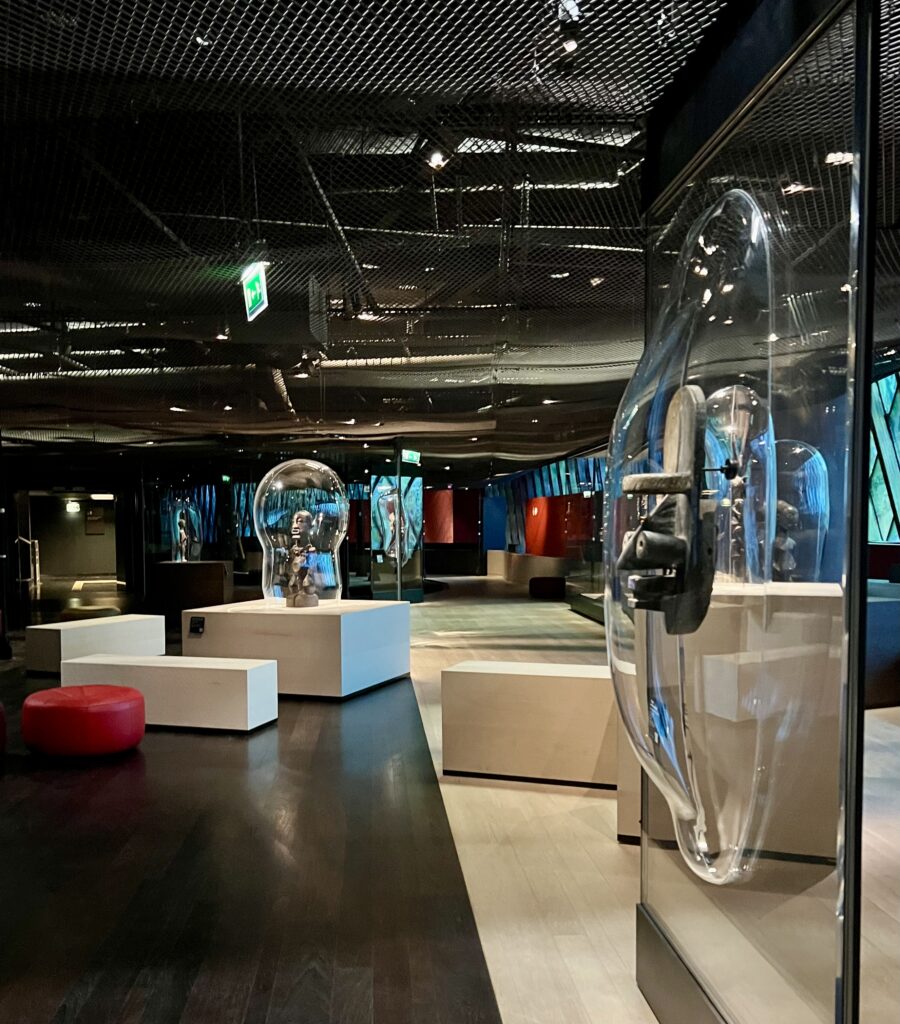
Marc Ladreit de Lacharriere Gallery
Definitely head up the stairs to the uppermost gallery, which is a permanent exhibition space.
The art was bequeathed to France by business man and art collector Marc Ladreit de Lacharrière in 2018.
In a gallery specially designed by Jean Nouvel, you can discover an ancient collection of Oceanic and African art. 36 busts and statuettes are displayed in transparent bubbles resting on bi-colored wooden floors. The collection is valued at € 50 million.
The intimate gallery has comfy chairs to rest your feet and great views of the exhibits below from its perch.

Practical Information & Tips For Visiting The Quai Branly
Address: 37 Quai Branly
Metro: Alam-Marceau
Tickets:
Tickets are 12 euros and you can buy one online here or from Get Your Guide here.
In the off season, you can also queue up to buy a ticket at the ticket counter or use one of the ticket machines to the left of the main entrance. Audio guides are an additional € 5.
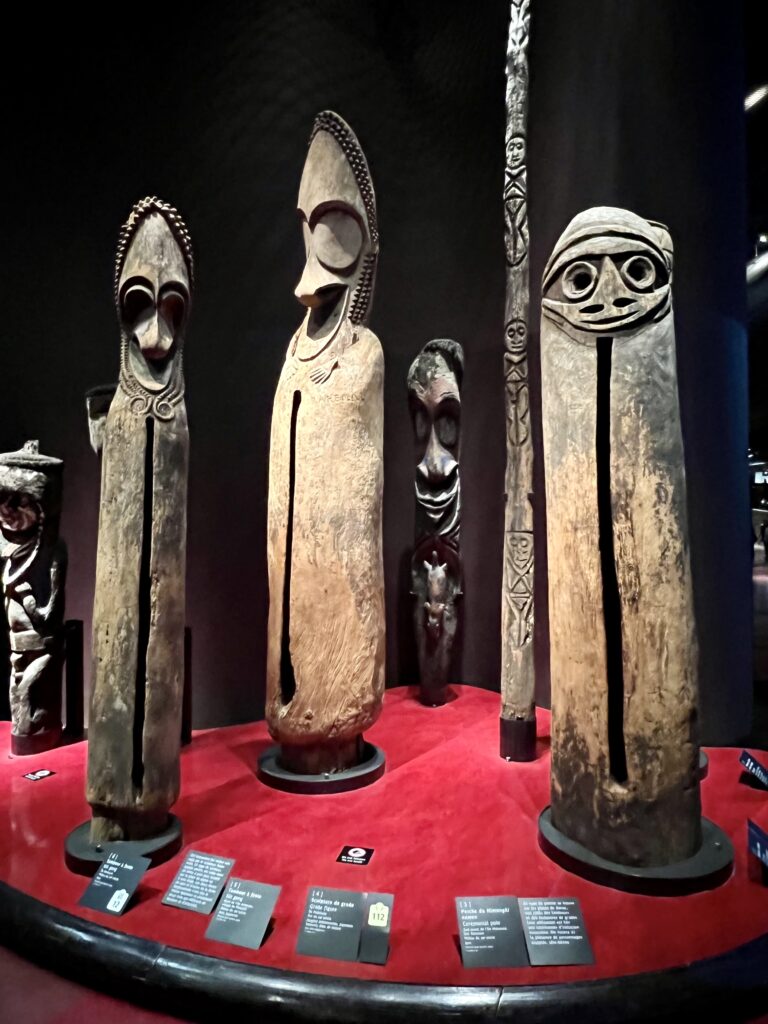
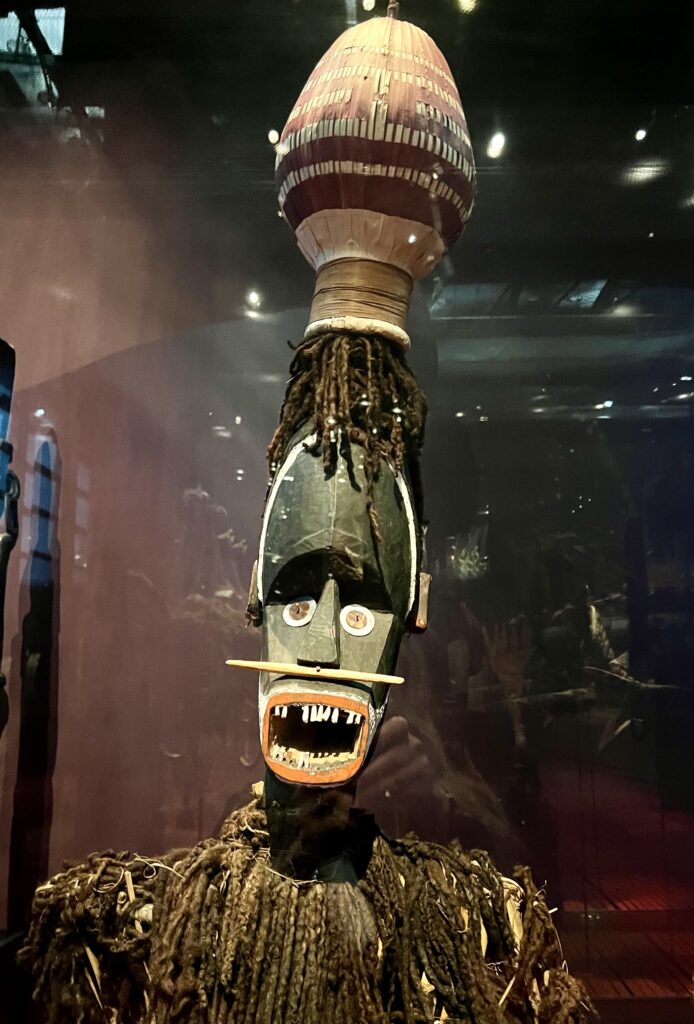
You also have free entry to the museum with the Paris Museum Pass, which is a great value if you are an avid museum goer.
Opening Hours: The museum is open Tuesday through Sunday from 10:30 am to 7:00 pm. Thursday night the museum is open until 10:00 pm.
How long to spend: Since you’re getting a world tour, I’d advise budgeting at least 2-3 hours to see everything. You’ll need more time if you want to visit the temporary exhibitions.
Exhibitions:
The museum puts on a dozen of exhibitions over the course of the year. It’s also a cultural complex with a teaching and resource center.
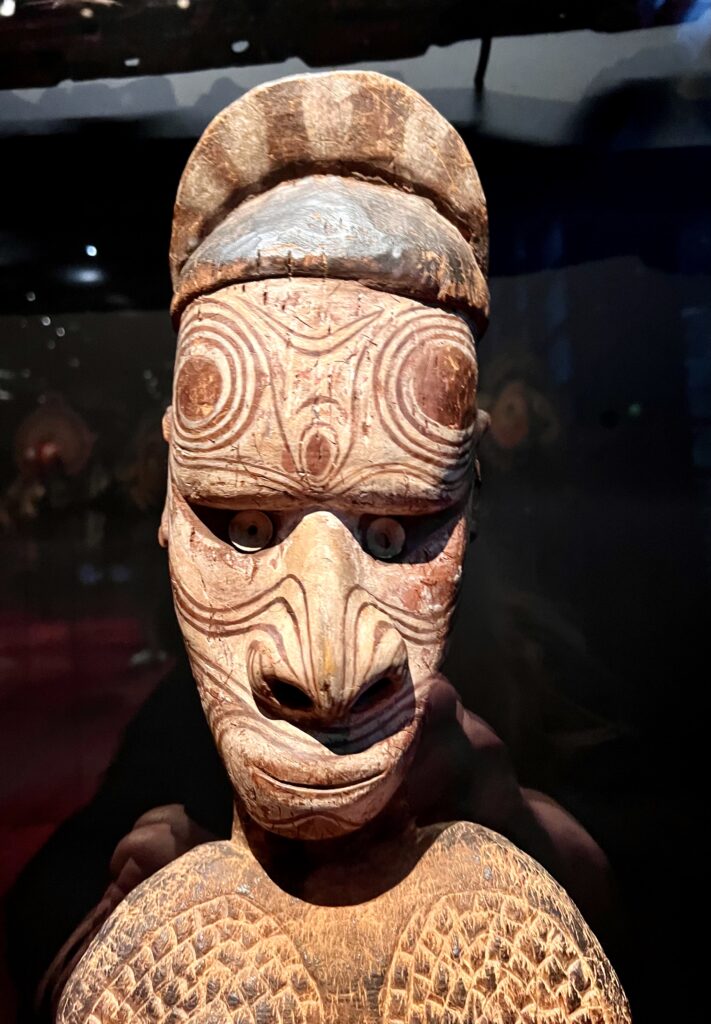
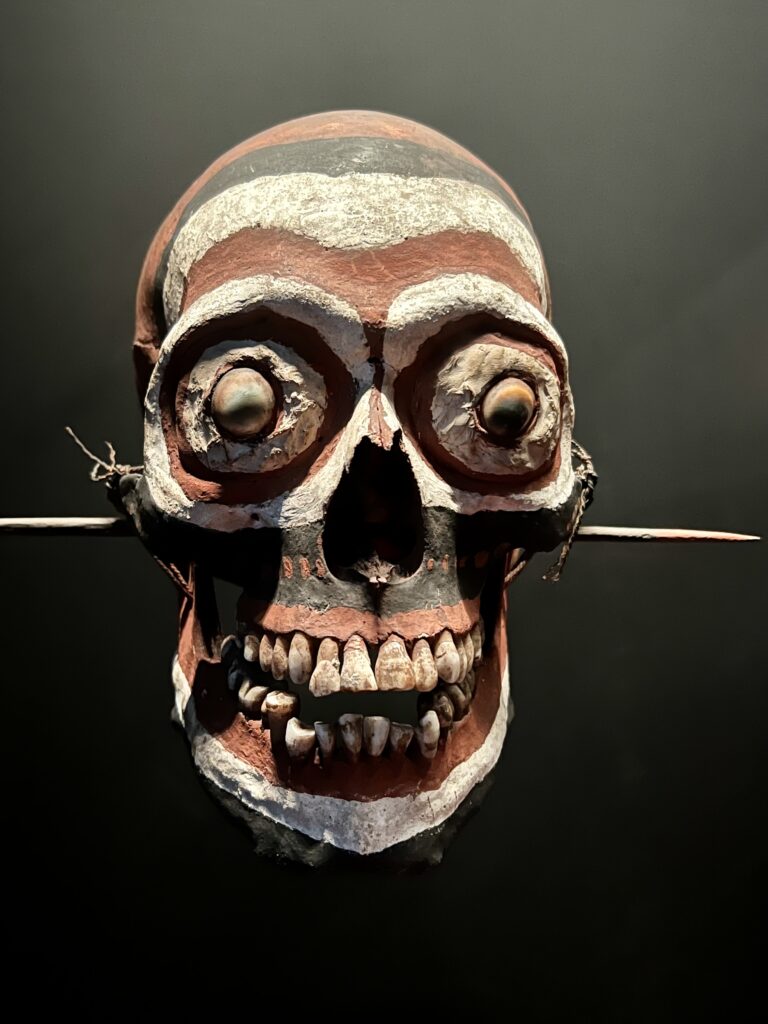
The museum hosts performances, lectures, concerts, international symposia, and other events in the Claude Levi-Strauss Theater, the Jacques Kerchache reading room, and the media library.
Bookstores:
There’s a small bookstore inside the museum that’s connected with the temporary exhibitions.
There’s a much larger one outside, opposite the main entrance. You’ll find books, artisan wares, ethically-created objects, and delightful children’s toys.
Restaurants:
Cafe Jaques is in the garden. It’s a contemporary cafe that’s quite popular and often full at lunch time.
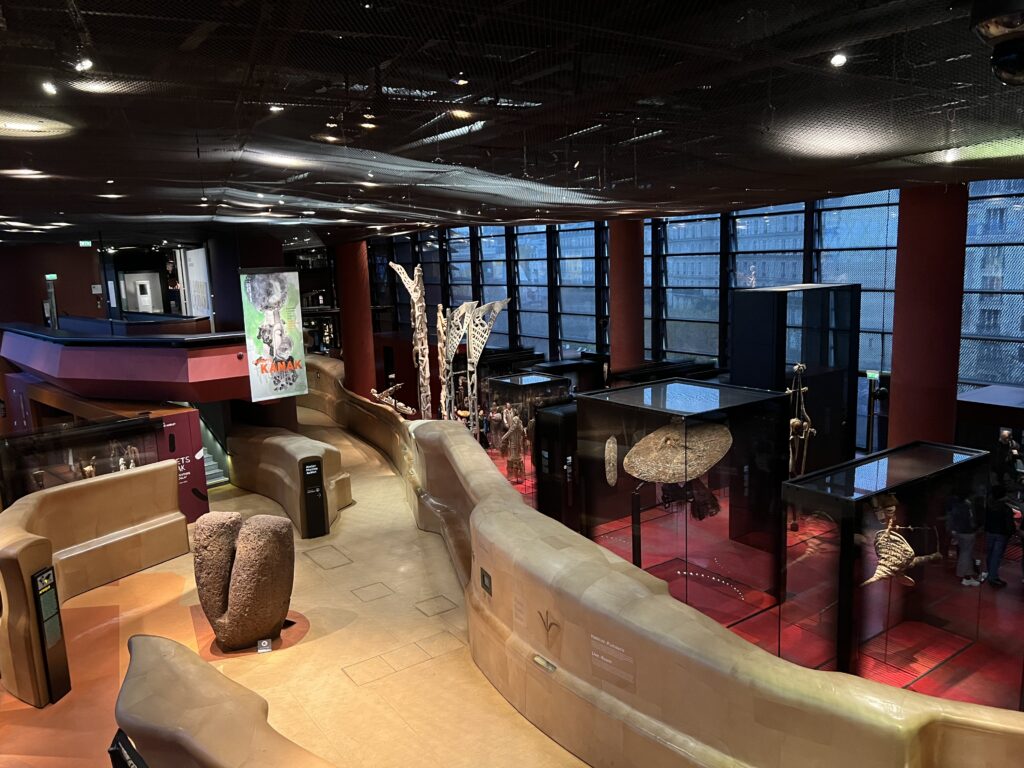
Les Ombres is one of Paris’ hottest new restaurants. It has a separate entrance, accessed from the museum garden. You’ll need to make a reservation to eat there and enjoy front row seats to the Eiffel Tower.
Louvre:
Need more non-Western art? You can also head to the Louvre.
In 2000, urged on by Chirac, the Louvre inaugurated the Pavillon des Sessions to display 120 artworks from Africa, Asia, Oceania, and the Americas. The world’s most popular museum thus extended its reach to include the cultures of every continent.
I hope you’ve enjoyed my guide to the Quai Branly – Jacques Chirac. You may enjoy these other Paris travel guides and resources:
- 5 day itinerary for Paris
- 3 day itinerary for Paris
- 2 day itinerary for Paris
- Hidden gems in Paris
- Guide To Montmartre
- Guide To the Latin Quarter
- Guide to the Marais
- Best Museums in Paris
- Louvre Survival Tips
- Guide To the Musee d’Orsay
- Secret Day Trips from Paris
Pin it for later.

